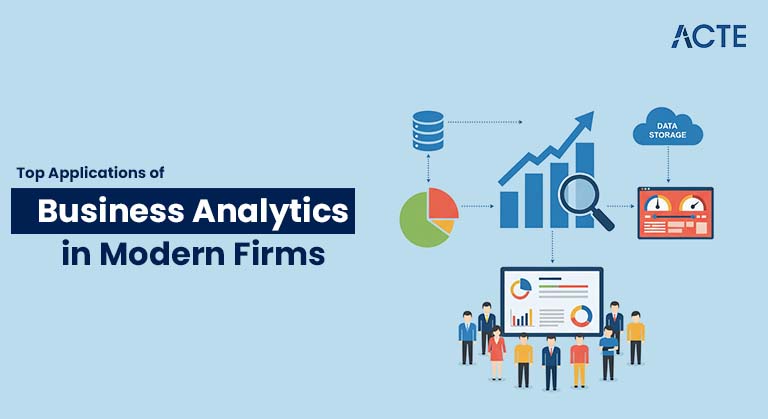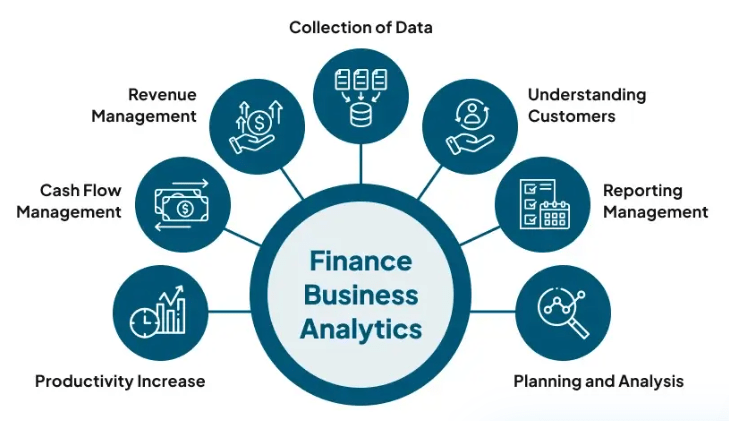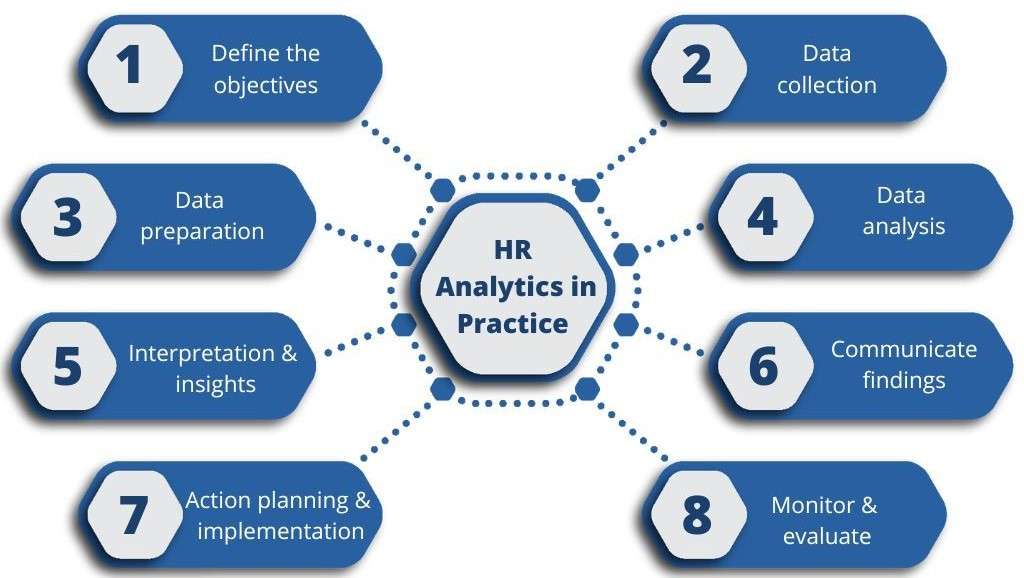
- Introduction to Business Analytics
- Business Analytics in Finance
- Business Analytics in Marketing
- Business Analytics in Operations
- Business Analytics in Human Resources
- Business Analytics in Customer Service
- Business Analytics in Logistics and Supply Chain
- Business Analytics in the Public Sector and Government
Introduction to Business Analytics
Business Analytics is a powerful discipline that leverages data, statistical analysis, and predictive modeling to drive business decision-making and optimize outcomes. In today’s data-driven world, organizations across various industries use business analytics to gain insights, improve efficiency, and enhance performance. The applications of business analytics span multiple sectors, making Business Analyst Training an essential tool for gaining a competitive advantage. In logistics and supply chain, it helps in demand forecasting, inventory optimization, and route planning, ensuring cost-effective and timely delivery of goods. In the public sector and government, business analytics supports policy-making, resource allocation, fraud detection, and citizen service improvement by analyzing large datasets for better governance. From retail and healthcare to manufacturing and finance, the strategic use of analytics enables businesses to anticipate trends, personalize customer experiences, and streamline operations. As organizations increasingly embrace digital transformation, the demand for skilled professionals in business analytics continues to grow. This introduction lays the foundation for understanding how data can be transformed into actionable insights and how its intelligent use across industries can significantly influence strategic planning and operational success. Whether in logistics and supply chain or the public sector and government, business analytics is a key driver of innovation and informed decision-making.
Are You Interested in Learning More About Web Developer Certification? Sign Up For Our Business Analyst Online Training Today!
Business Analytics in Finance
- Lead Generation: Analytics helps identify high-potential customers by analyzing historical data, buying behavior, and market trends, allowing financial institutions to target leads more effectively and increase conversion rates.
- Customer Service: Data analysis is used to track customer interactions, identify pain points, and personalize service delivery. A clear understanding Scope of Business Analytics enables organizations to leverage these insights effectively, improving overall customer satisfaction and building long-term loyalty.
- Customer Service Representative Support: Business analytics provides real-time dashboards and customer insights that help customer service representatives resolve issues faster, anticipate needs, and offer relevant financial solutions.
Business Analytics in Finance plays a critical role in helping financial institutions make informed decisions, reduce risks, and enhance profitability. By leveraging data-driven insights, finance professionals can better understand market trends, customer behavior, and internal operations. Business analytics not only supports strategic planning but also improves day-to-day functions such as customer interactions, resource allocation, and operational efficiency.
Here are six key ways business analytics is used in finance:

- Performance Management: Financial firms use analytics to measure employee performance against KPIs, identify gaps, and design targeted training or improvement plans for teams and individuals.
- Workforce Planning: Predictive analytics forecasts staffing needs based on seasonal demand, customer trends, and business goals, ensuring optimal workforce utilization and cost control.
- Risk Assessment and Fraud Detection: Advanced analytics tools detect anomalies in transactions, helping mitigate fraud and assess credit risks more accurately.
- Lead Generation Optimization: Operations teams use analytics to support marketing and sales by identifying high-quality leads through data on customer behavior, demographics, and purchasing patterns, ensuring smoother handoffs and increased conversions.
- Customer Service Improvement: Analytics helps operations monitor response times, resolution rates, and customer satisfaction scores, enabling teams to enhance overall customer service experiences key skills learned when exploring How to Become a Power BI Developer.
- Customer Service Representative Efficiency: Real-time analytics dashboards provide customer service representatives with insights into customer history and preferences, helping them deliver faster and more personalized support.
- Performance Management: Business analytics tracks key performance indicators (KPIs) across departments, helping managers assess productivity, identify bottlenecks, and implement continuous improvement initiatives.
- Workforce Planning: By forecasting workload and staffing needs, analytics supports smarter workforce planning, ensuring the right number of people are in the right roles at the right time.
- Inventory and Supply Chain Optimization: Operations teams use analytics to manage inventory levels, predict demand, and improve delivery timelines, reducing waste and enhancing service quality.
- Lead Generation Support: Analytics helps identify patterns in customer inquiries and behaviors, which can be used to assist sales teams in lead generation by targeting prospects who are more likely to convert.
- Customer Service Optimization: By analyzing service data such as resolution times, wait times, and satisfaction scores using Top Business Intelligence Tools, organizations can enhance their customer service processes for faster and more effective responses.
- Customer Service Representative Performance: Analytics tools track individual metrics for each customer service representative, identifying top performers, highlighting areas for improvement, and enabling targeted training.
- Performance Management: Business analytics provides detailed reports and dashboards that support performance management by tracking team and individual KPIs, helping managers improve accountability and results.
- Workforce Planning: Predictive analytics helps forecast customer demand and plan staffing accordingly, leading to smarter workforce planning and reduced service bottlenecks.
- Customer Feedback Analysis: Sentiment and text analytics turn feedback into insights, helping businesses identify recurring issues and opportunities to enhance the overall customer experience.
Business Analytics in Marketing
Business Analytics in Marketing plays a transformative role in helping organizations understand customer behavior, optimize campaigns, and maximize return on investment. By leveraging data-driven insights, marketers can segment audiences more effectively, personalize messaging, and forecast trends with greater accuracy. The applications of business analytics in marketing range from customer acquisition and retention strategies to pricing optimization and sentiment analysis. Businesses use analytics to evaluate the success of marketing channels, allocate budgets more efficiently, and enhance campaign performance through continuous testing and learning. While marketing remains the core focus, the value of business analytics extends far beyond, influencing operations in logistics and supply chain by ensuring that promotional activities align with inventory levels and distribution capacity opening doors to exciting Tableau Career Opportunities for data-driven professionals. Similarly, in the public sector and government, marketing analytics helps in public awareness campaigns, understanding citizen engagement, and improving communication strategies. By integrating real-time data from multiple sources, organizations gain a comprehensive view of the customer journey, allowing for smarter decision-making and improved customer experiences. As competition intensifies and consumer expectations evolve, the strategic use of business analytics in marketing becomes essential not just for growth but for survival in a fast-paced digital economy.
Are You Preparing for Business Analyst Jobs? Check Out ACTE’s Business Analyst Interview Questions & Answers to Boost Your Preparation!
Business Analytics in Operations
Business Analytics in Operations is essential for optimizing internal processes, reducing costs, and improving overall efficiency across an organization. By turning data into actionable insights, operations teams can streamline workflows, make informed decisions, and better respond to real-time challenges. Whether it’s managing supply chains or enhancing customer interactions, business analytics helps align operational goals with business strategy.
Here are six key applications of business analytics in operations:
Are You Considering Pursuing a Master’s Degree in Business Analyst? Enroll For Business Analyst Masters Program Training course Today!
Business Analytics in Human Resources
Business Analytics in Human Resources (HR) is revolutionizing the way organizations manage talent, improve employee engagement, and make strategic workforce decisions. By leveraging data, HR professionals can analyze employee performance, predict attrition, and identify skills gaps to drive better hiring and retention strategies. The applications of business analytics in HR extend to recruitment, training, compensation planning, and diversity management, allowing for more informed and equitable decision-making. Predictive models help in forecasting future workforce needs, while sentiment analysis tools gauge employee morale in real-time skills that are often developed through Business Analyst Training. Although primarily focused on people management, HR analytics also plays a crucial role in cross-functional collaboration. For example, in logistics and supply chain, workforce analytics ensures optimal staffing for demand peaks and reduces downtime due to labor shortages. Similarly, in the public sector and government, analytics in HR supports policy implementation, enhances public workforce efficiency, and ensures compliance with labor regulations. By turning complex employee data into actionable insights, business analytics empowers HR leaders to align talent strategies with organizational goals. As the demand for data-driven decision-making grows, HR analytics is becoming a cornerstone of modern workforce management, enabling organizations to build more agile, productive, and engaged teams across industries.

Business Analytics in Customer Service
Business Analytics in Customer Service plays a vital role in enhancing the customer experience, improving service efficiency, and driving customer satisfaction. By using data-driven insights, organizations can understand customer needs, predict issues before they arise, and deliver more personalized support. Business analytics enables teams to monitor service quality in real-time and make informed decisions that benefit both customers and the business.
Here are six key applications of business analytics in customer service:
Business Analytics in Logistics and Supply Chain
Business Analytics in Logistics and Supply Chain plays a crucial role in optimizing operations, reducing costs, and improving efficiency across the entire supply chain. By leveraging data, companies can forecast demand, track shipments in real-time, and improve inventory management. Through the applications of business analytics, businesses can identify areas for improvement and implement solutions that streamline processes from procurement to delivery. For instance, predictive analytics can help with lead generation by identifying trends and opportunities in the supply chain that align with market demand insights that can be effectively visualized when you Create a Donut Chart in Tableau Moreover, integrating analytics in customer service ensures that delivery schedules are met, customer expectations are exceeded, and any potential delays are quickly addressed. Analytics tools also enable better management of customer service representatives by providing real-time data on customer interactions and service levels, improving response times and satisfaction. In performance management, key performance indicators (KPIs) for logistics operations, such as delivery times, order accuracy, and cost control, are constantly monitored to enhance efficiency. Additionally, workforce planning is optimized through predictive analytics, ensuring that the right number of staff are scheduled based on demand fluctuations. Overall, business analytics helps logistics and supply chain teams make data-driven decisions, improve service levels, and maintain a competitive edge in the market.
Are You Interested in Learning More About Business Analyst? Sign Up For Our Business Analyst Online Training Today!
Business Analytics in the Public Sector and Government
Business Analytics in the Public Sector and Government is increasingly being used to improve decision-making, optimize resource allocation, and enhance the delivery of public services. By leveraging data, government agencies can better understand public needs, predict trends, and evaluate the effectiveness of policies. The applications of business analytics in this space are vast, ranging from improving public health outcomes to optimizing infrastructure and transportation systems. In logistics and supply chain, analytics helps streamline the distribution of resources, and Business Analyst Training equips professionals to ensure timely delivery of goods and services to citizens. For example, it can enhance disaster response efforts by analyzing real-time data on available supplies and demand. Public sector organizations also use analytics for performance management, monitoring and improving the efficiency of public services, and ensuring accountability in the use of taxpayer funds. Furthermore, by applying predictive analytics, governments can forecast future needs in areas such as education, healthcare, and urban planning, leading to more informed, data-driven decisions. Business analytics also supports workforce planning, ensuring that the right personnel are in place to meet the needs of the public. Ultimately, business analytics empowers the public sector and government to deliver services more effectively, create policies that are aligned with citizen needs, and optimize operations for better outcomes.




